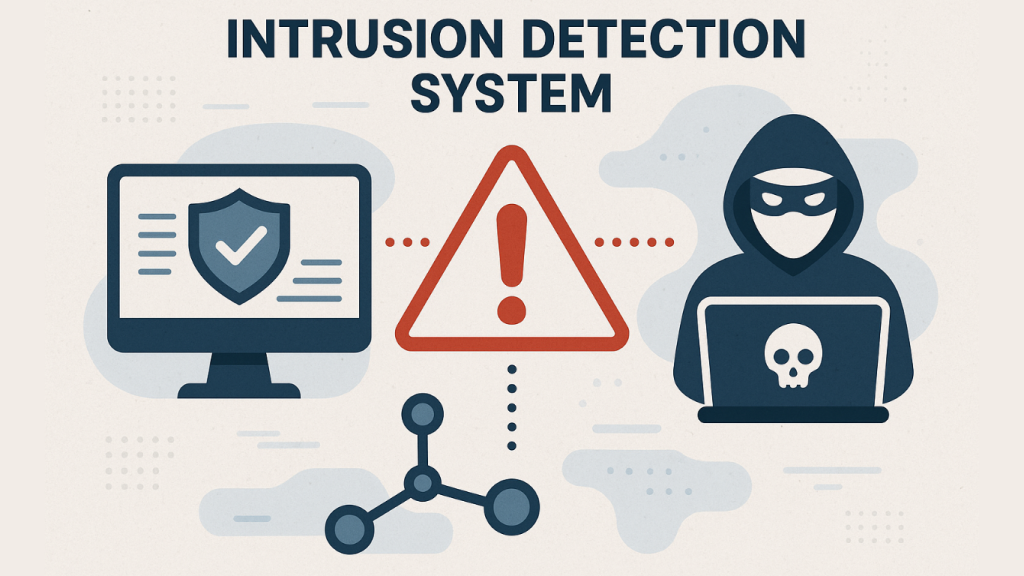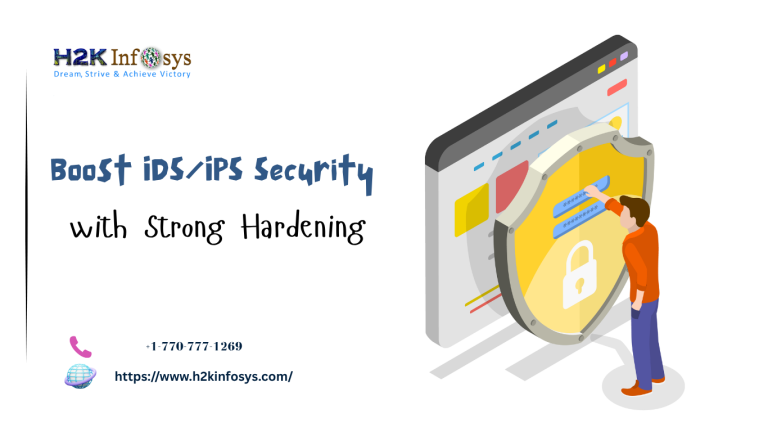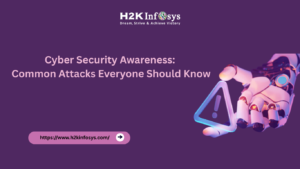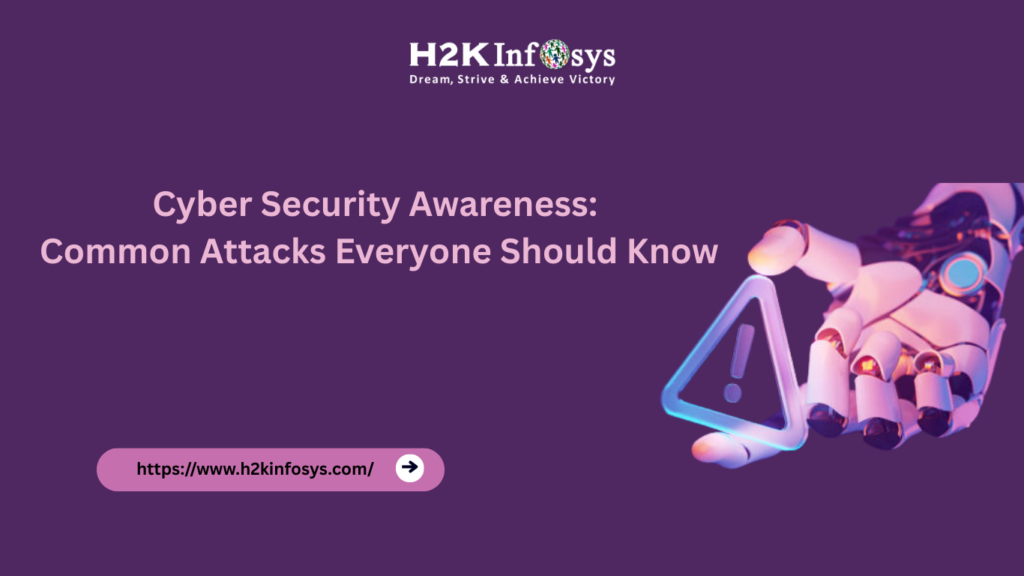Introduction: The Critical Role of IDS/IPS in Cyber Security
In the modern age of sophisticated cyberattacks, organizations cannot rely on firewalls alone. IDS/IPS solutions, Intrusion Detection Systems and Intrusion Prevention Systems, are frontline defenses in any cyber security architecture. They monitor, analyze, and block suspicious network activity before it can escalate into a full-scale breach.
However, simply installing is not enough. If left with default settings, they can be bypassed by experienced attackers. That’s why hardening the process of tightening configurations, improving monitoring, and integrating with broader cyber security strategies is vital.
In this detailed guide, we will cover:
- How it works within a cyber security framework.
- Common vulnerabilities that attackers exploit.
- Step-by-step hardening methods with real-world examples.
- Career benefits of mastering IDS/IPS hardening.
Whether you’re a beginner in Cyber security training courses or an experienced professional, these methods will help you maximize your defense capabilities.
Understanding IDS/IPS in Cyber Security
What is IDS?
An Intrusion Detection System identifies malicious or unusual activity on a network. It works in a passive role, alerting administrators when it detects suspicious patterns.

Example: If a sudden spike in failed login attempts is detected from a foreign IP, an IDS will trigger an alert.
What is IPS?
An Intrusion Prevention System takes this one step further by actively blocking detected threats. It can drop packets, reset connections, or block IP addresses in real time.
Example: If malware traffic is identified, the IPS will immediately block the source to prevent its spread.
IDS/IPS in Cyber Security Architecture
In a cyber security layered defense model, IDS/IPS sits between the firewall and internal network, acting as a second line of defense. This positioning allows it to detect threats that slip past perimeter protections.
Common Weaknesses in IDS/IPS Systems
Even the most advanced tools can be compromised without proper hardening. Common issues include:
- Default Passwords and Settings – Many installations still run on vendor default credentials, making them easy targets.
- Outdated Signatures – Without frequent updates, the system cannot recognize new attack patterns.
- Excessive False Positives – Overwhelming alerts cause “alert fatigue,” leading admins to miss genuine threats.
- Unencrypted Communications – Hackers can intercept unprotected admin sessions to alter settings.
- Poor Integration – If IDS /IPS isn’t tied into other Cybersecurity tools like SIEM, response time is delayed.
In Cyber security training and placement programs, these vulnerabilities are often explored through simulated attack scenarios so students can learn prevention techniques.
Core Hardening Techniques for IDS/IPS
Hardening is about turning a default IDS /IPS setup into a robust, attack-resistant component of your Cybersecurity strategy.
Keep Signatures and Software Updated
- Schedule daily signature updates.
- Apply vendor patches promptly.
Case Study: A telecom company reduced malware infections by 70% simply by automating daily signature updates.
Apply the Principle of Least Privilege
- Assign admin rights only to essential team members.
- Use role-based access control to limit functions.
Tip: This is a fundamental Cybersecurity practice that applies to all systems, not just IDS /IPS.
Encrypt All Management Access
- Use SSH or TLS for remote admin sessions.
- Avoid HTTP and Telnet for any IDS/IPS management interfaces.
Customize Detection Rules
- Tailor detection thresholds to your specific environment.
- Disable irrelevant rules to reduce false positives.
Integrate with SIEM
- Forward alerts to a Security Information and Event Management system for centralized monitoring.
- SIEM integration is a skill taught in most cyber security analyst training online courses.

Advanced Hardening Strategies
Network Segmentation
Deploy IDS /IPS at key choke points in the network between public-facing services and internal assets. This ensures maximum threat visibility.
Performance Optimization
Fine-tune packet capture settings to handle peak loads without packet drops. Slow IDS /IPS systems can miss fast-moving attacks.
High Availability
Set up failover clusters so that if one IDS /IPS node goes down, another takes over instantly.
Diagram Suggestion:
- Show primary and secondary IDS /IPS nodes in a high-availability setup with load balancing.
Threat Intelligence Feeds
Enhance detection by subscribing to premium threat intelligence feeds that integrate with IDS /IPS.
Step-by-Step IDS /IPS Hardening Guide
- Baseline Audit – Document all current IDS /IPS settings.
- Patch and Update – Bring all components up to date.
- Access Control – Restrict who can configure the system.
- Rule Tuning – Adjust to reduce false positives.
- Encryption Setup – Secure all management connections.
- Integration – Link to SIEM and incident response tools.
- Testing – Conduct simulated attacks to validate performance.
This practical sequence is a core project in our Cyber security training and job placement program.
Real-World Success Stories
Case 1: Banking Sector
A bank’s IDS /IPS caught a spear-phishing attack early because its rules were customized to detect unusual data exfiltration patterns. Quick action saved millions.
Case 2: Healthcare Provider
By hardening their IDS /IPS, a healthcare provider met HIPAA compliance and avoided fines during a government audit, an important cybersecurity milestone.
Why IDS /IPS Hardening Skills Elevate Your Career
In the competitive Cybersecurity job market, employers value professionals who can optimize and harden IDS /IPS systems. These skills demonstrate:
- Technical depth.
- Practical incident response capabilities.
- Understanding of compliance requirements.
Graduates from cyber security training and placement programs with strong IDS /IPS knowledge often move into roles such as:
- SOC Analyst
- Network Security Engineer
- Threat Intelligence Specialist
Best Practices Checklist
- Update signatures daily.
- Use strong authentication.
- Encrypt all communications.
- Tune rules to reduce noise.
- Integrate with SIEM.
- Test quarterly with red team exercises.
Learning IDS /IPS Hardening at H2K Infosys
H2K Infosys offers Cybersecurity training courses that include:
- Hands-on IDS /IPS configuration labs.
- Real-world case studies.
- Threat simulation exercises.
Whether you prefer in-person or online classes cyber security, you’ll master the skills employers expect.
Conclusion: Build Stronger Cyber Defenses
A well-hardened IDS /IPS is an asset no organization should overlook. By combining technical precision with strategic placement in your Cybersecurity plan, you can stop threats before they become breaches.
Join H2K Infosys’ Cyber security training and placement program today to gain expert-level IDS /IPS skills and secure your future in Cybersecurity.


























